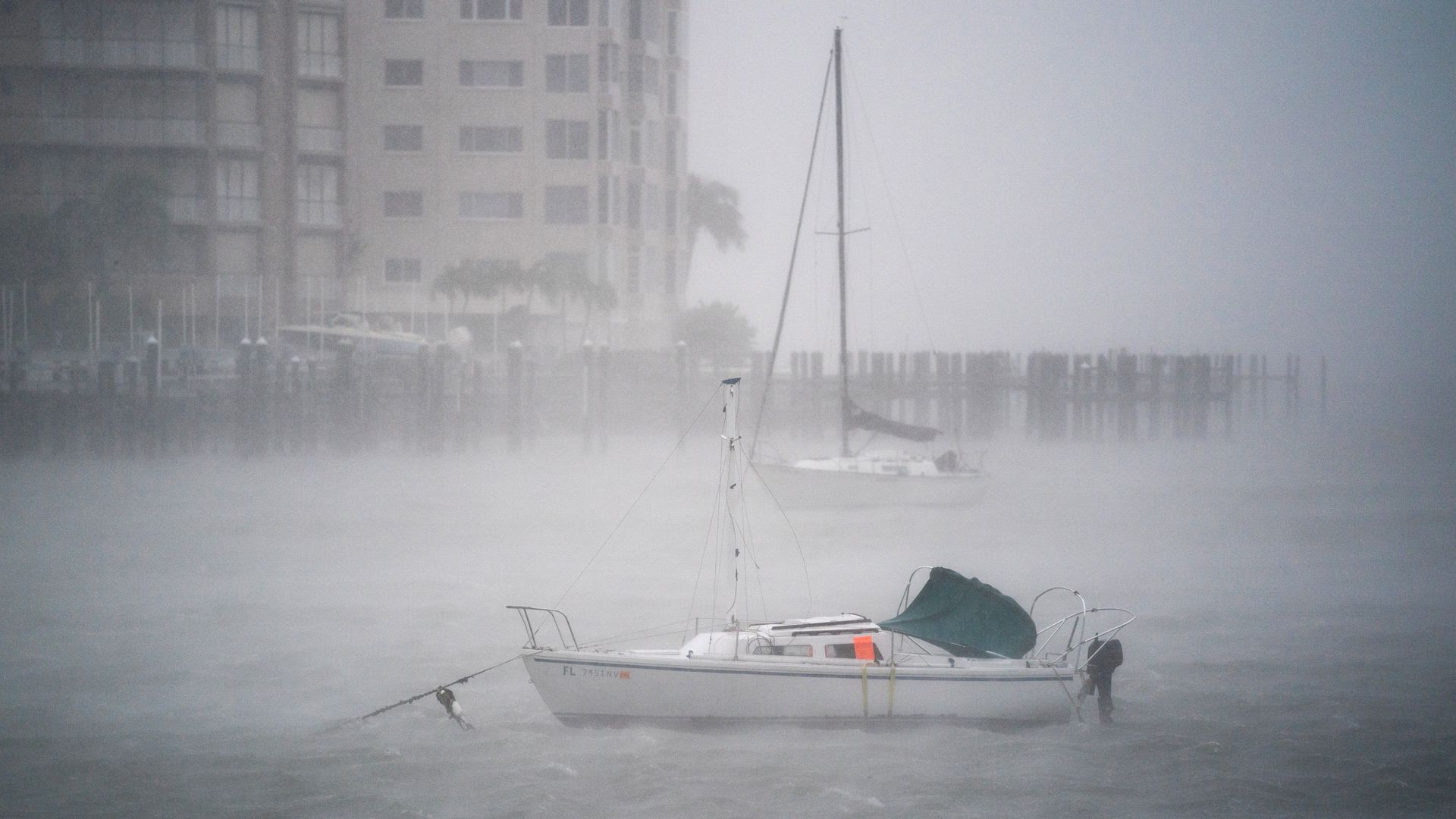 A line chart of Hurricane Ian's max sustained wind speeds from 5am on Sept. 27 to 12pm on Sept. 28. Data: NOAA; Note: Category 5 intensity begins at 157 mph; Chart: Madison Dong/Axios Visuals Hurricane forecasters' worst nightmare came true yesterday morning when what had been a Category 3 storm the night before suddenly jumped almost to Category 5, Andrew writes. Why it matters: It used to be rare for storms to keep strengthening until landfall, let alone do so rapidly. Now it is not — and studies show this is a dangerous sign of climate change. The big picture: Ian's intensity leap was made possible by warm ocean temperatures and abundant atmospheric moisture — both factors that climate change enhances. - In recent years, multiple storms have rapidly intensified as they neared the Gulf Coast and kept getting stronger through landfall.
- Previously, tropical storms and hurricanes tended to weaken as they neared the northern Gulf Coast in particular.
- But that didn't happen with Hurricanes Laura or Ida in 2020 and 2021 — or with Hurricane Michael, which ramped up to a Category 5 storm in the Florida Panhandle in 2018.
It's not just the U.S. suffering the consequences of rapidly intensifying tropical cyclones. Consider an example from halfway around the world, which occurred just as Ian was spinning up in the Caribbean. - In the western tropical Pacific Ocean, a storm named Noru began swirling toward the Philippines.
- It surprised forecasters by suddenly strengthening from a robust tropical storm to a Category 5 super typhoon with 160 mph winds in just 24 hours.
- This was one of the fastest rates of intensification on record, anywhere.
Threat level: Rapid intensification shortly before landfall can take people off guard and strand them in vulnerable spots for storm surge flooding, damaging winds, or both. - Emergency management officials design evacuation plans based on storm intensity and movement. Sudden shifts can render such planning inadequate.
- All landfalling storms now contain more dangerous coastal flooding in their arsenals, due to human-caused sea level rise.
What we're watching: Intensity forecasts have been stuck, even as forecasters have made great strides in predicting storm tracks several days in advance. But there's research underway to better predict intensity shifts, using new technologies such as Saildrones, satellites and other sensors. The bottom line: Until we crack the code of how to tell that a storm will leap through categories just before landfall, with enough lead time to act, we are going to be vulnerable to more devastating, and potentially deadly, surprises. Read the whole story. | 









No comments:
Post a Comment